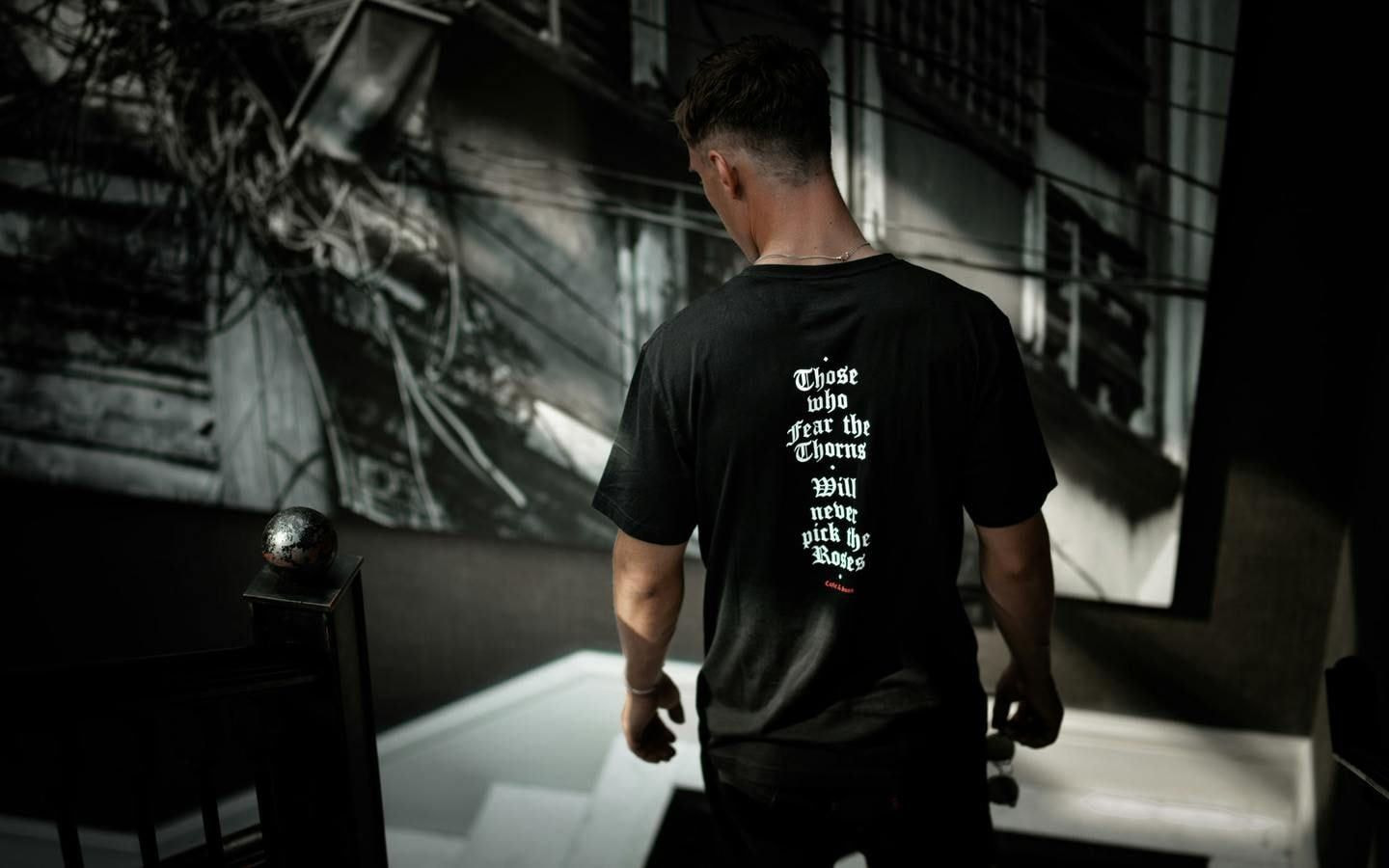Table of contents
Want to start a business without spending thousands? Start with t-shirts. Many people want custom t-shirts with printed logos, slogans, and quotes to express themselves. If you’ve got a creative t-shirt idea, someone probably wants to buy it. So, how do you start selling t-shirts online?
Learn how to start a t-shirt business in this detailed step-by-step guide. We’ve included tips for making tees that sell, the dos and don’ts of t-shirt design, the best printing methods, effective marketing techniques, and more.
Whether you want to sell a few t-shirts on the side or launch a full clothing line, this guide will help you do it right. Get ready to dot down your t-shirt business plan and succeed in ecommerce!
Why start a t-shirt business in 2025?
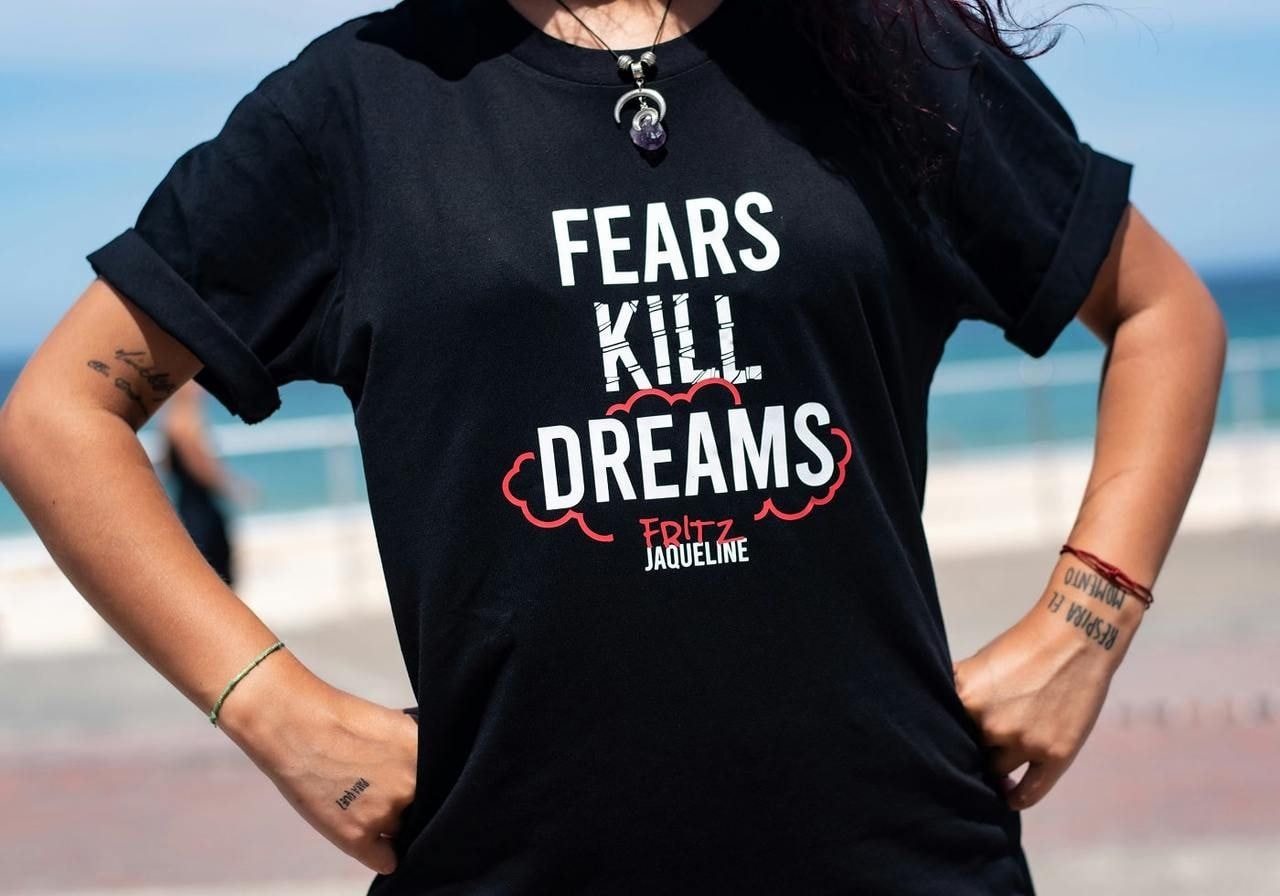
There’s a reason the t-shirt business keeps topping lists of low-cost business ideas – it’s one of the easiest ways to start selling online without a huge initial investment. If you have a great t-shirt idea and think, I’d wear that, there’s a good chance someone else would too.
T-shirts never go out of style. People wear them to express opinions, support causes, show off their humor, or simply because they’re comfortable. That demand keeps growing – especially for niche, mission-driven, or creator-led brands.
The best part? You don’t need inventory or expensive equipment. With Print on Demand, you can launch your own t-shirt business from your laptop. Just upload your designs, connect to your ecommerce store, and start selling. You only pay for what you sell – keeping costs low and risk even lower.
Whether you’re testing a clothing line, growing your ecommerce business, or finally turning your shirt business ideas into a real brand, now’s the time to get started. The tools are there. The t-shirt market’s open. All that’s missing is your take on it.


How to start a t-shirt business in eight steps
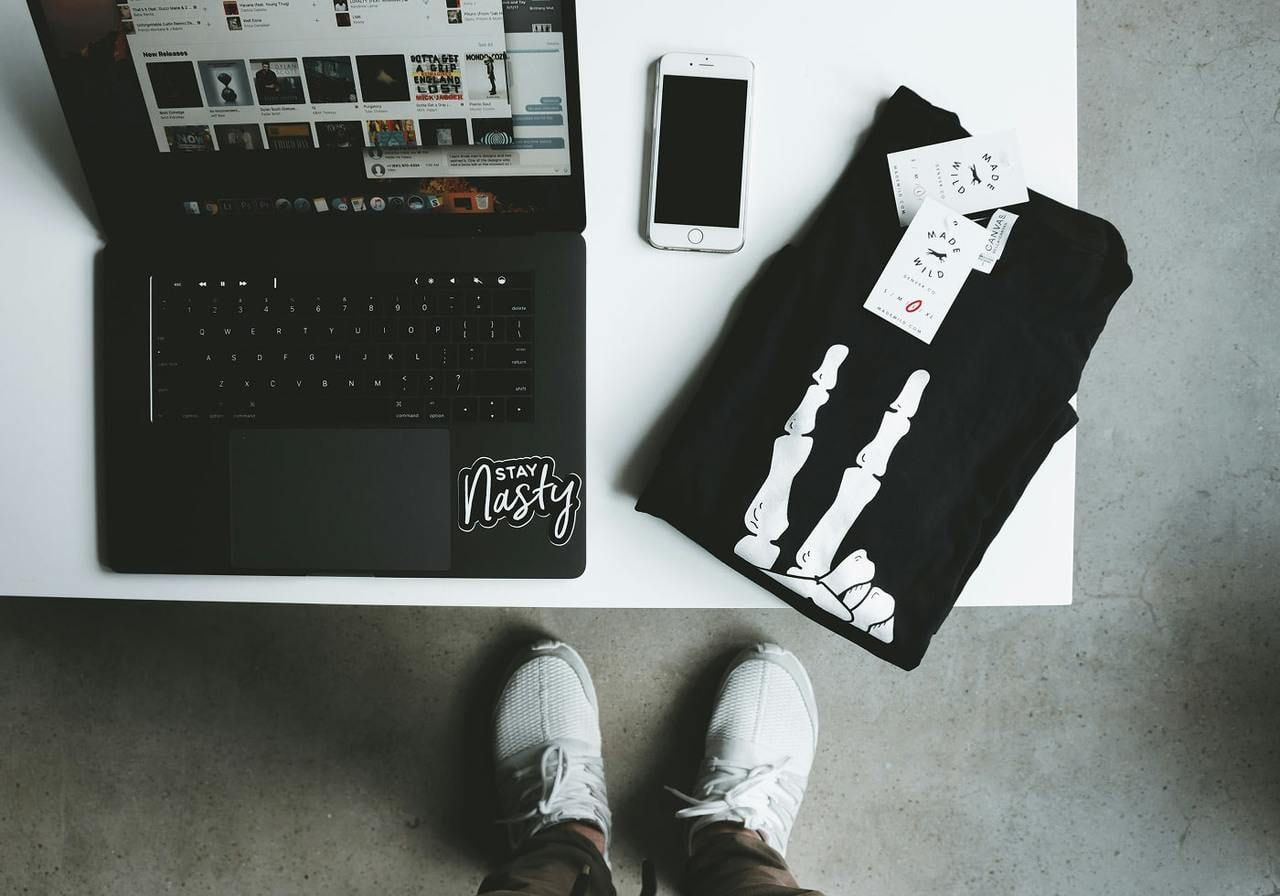
Running a successful t-shirt business takes careful planning and strategic marketing. Follow these steps to ensure you stand out and build a loyal customer base.
1. Focus on a specific t-shirt niche
One of the most important steps in building a thriving t-shirt business is choosing a niche. While the global t-shirt market is worth over $45.5B, that size comes with serious competition. Selling “cool t-shirts” isn’t enough – you need designs that speak to a specific audience.
Start by narrowing your focus. Who do you want to reach, and what do they care about? Are they gamers? Obsessed with cats? Proud introverts? The more specific your niche, the easier it is to design a t-shirt line that connects.
Don’t go broad – drill down. Take Classic Dad, for example. Their shirts are packed with dad jokes and nostalgia, designed for one customer: the backyard barbecue, pun-loving dad. It’s a clear niche and easy to market to.
A clear niche means higher conversions and lower ad costs – because you’re targeting a defined audience with proven demand.
To find your own t-shirt niche, ask yourself:
-
What’s your ideal customer into?
-
What communities or subcultures are they part of?
-
What would they actually wear on a tee?
Use platforms like Etsy, Pinterest, or Instagram to spot popular micro-trends. Tools like Google Trends will help you see what’s growing in interest.
Still unsure? We’ve got a full guide on how to find a niche for your online store, with over 100 ideas to help spark inspiration and connect with the right audience.
2. Choose Print on Demand for fulfillment

Once you know your niche, it’s time to decide how you’ll get your t-shirts made and delivered. For most people starting their own t-shirt business online, Print on Demand (POD) is the easiest and most cost-effective t-shirt production option.
With POD, there’s no need to buy inventory, printing equipment, or storage space. Just upload your t-shirt designs, and your print-on-demand partner handles the printing, packing, and shipping. It’s a simple business model with low initial investment – ideal for launching your first online store or testing a new t-shirt idea.
Printful is one of the most trusted POD names. We offer a wide range of customizable products, high-quality printing methods like DTG (direct-to-garment printing), and global fulfillment centers to keep shipping times fast. Whether you’re starting with a single t-shirt or launching a full clothing line, we make it easy to start and scale your business.
POD works like dropshipping but with complete control over the design. Customize hundreds of trending products with no upfront risk.
When choosing a POD partner for your online t-shirt business, here’s what to look out for:
-
Product quality: A great t-shirt design deserves great materials. Look for partners offering high-quality shirt blanks and print options that last.
-
Fulfillment and shipping: The closer the fulfillment center is to your customers, the faster and cheaper the delivery will be.
-
Transparent pricing: Know the full cost per order, including printing, packaging, and shipping.
-
Support: Choose a partner with responsive, reliable customer service, especially if you’re a beginner.
-
Reputation: Check reviews, success stories, and real-life examples of other t-shirt businesses that use the platform.
When learning how to start a print-on-demand t-shirt business, choosing the right partner, like Printful, lets you focus on what matters: designing custom shirts, growing your target audience, and running a successful t-shirt business online.
3. Choose high-quality t-shirts
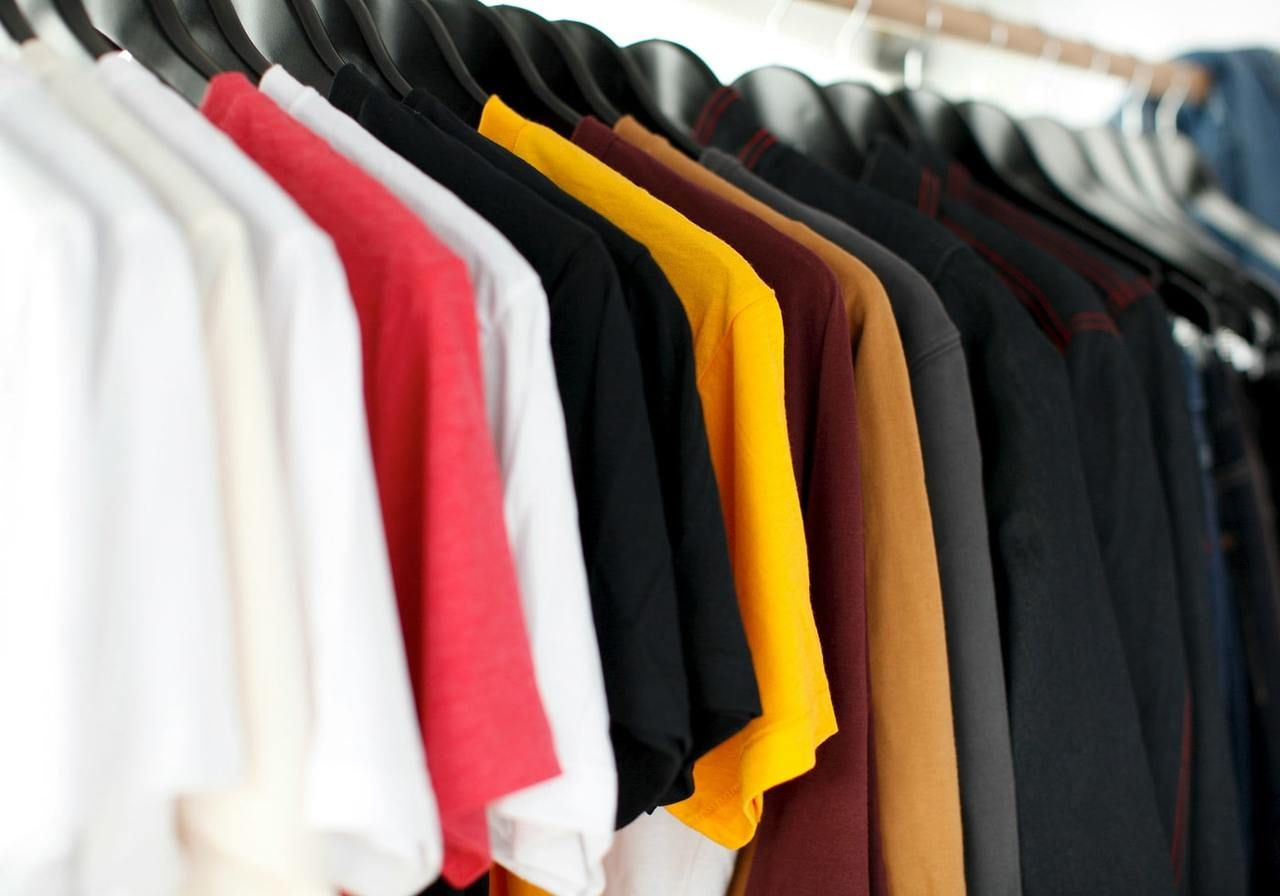
When starting a t-shirt business, product quality matters as much as design. A well-printed graphic won’t help if the shirt itself feels cheap or wears out quickly. Choose high-quality t-shirts that match your brand, customer expectations, and printing method.
Printful offers a range of custom t-shirts to suit different needs. From soft everyday basics to sturdy, heavyweight styles. Whether you’re going for a premium feel or a budget-friendly staple, there’s something for every t-shirt brand.
Here are a few popular choices for printing t-shirts from the Printful Catalog:
-
Unisex Staple T-Shirt | Bella + Canvas 3001
Lightweight, soft, and great for DTG printing. Perfect for casual everyday wear.
Explore this shirt → -
Unisex Garment-Dyed Heavyweight Shirt | Comfort Colors 1717
Vintage look with a lived-in feel. Ideal for bold t-shirt designs and laid-back styles.
Explore this shirt → -
Unisex Classic Tee | Gildan 5000
A budget-friendly option with a classic fit – great for promotions and larger print runs.
Explore this shirt → -
Unisex Basic Softstyle T-Shirt | Gildan 64000
Soft, lightweight, and versatile – ideal for fashion-forward designs.
Explore this shirt →
Not sure which blank t-shirts to choose? Most t-shirts are made from cotton, polyester, or cotton-poly blends. The fabric type affects print quality, durability, and how the shirt feels when worn.
Direct-to-garment printing works best on 100% cotton, while screen printing and heat transfer paper are often used on blends or lighter-weight materials. Each printing method has its strengths, so choosing the right fabric is key to getting a clean, long-lasting result.
To learn more about different materials and how they work with various printing techniques, check out our guide to choosing the best t-shirt materials.
4. Create unique designs
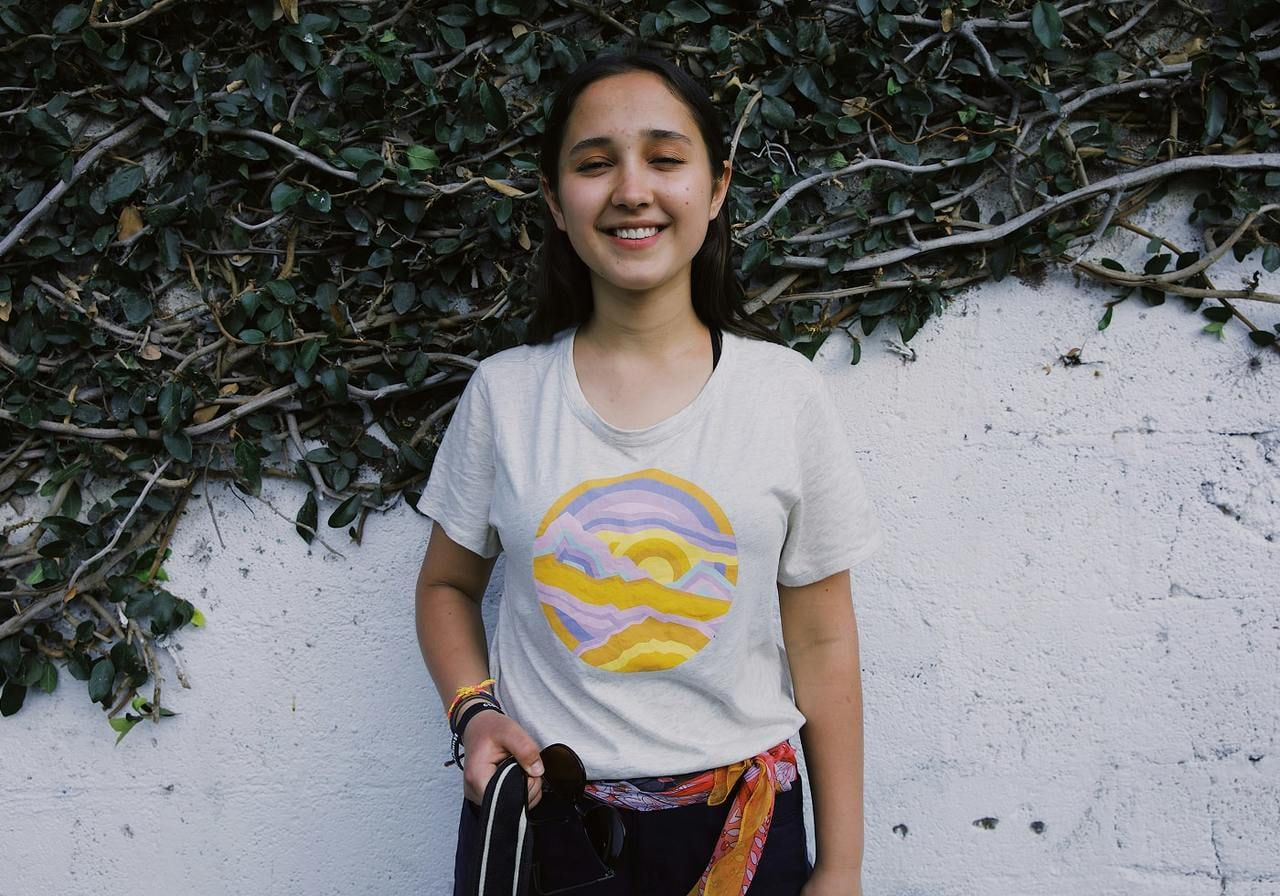
Strong designs turn a basic t-shirt into something people reach for. Great designs make your t-shirt brand memorable, help you stand out in a crowded market, and build trust with your audience.
Start with your niche. What kind of humor, style, or references do they connect with? The more personal your t-shirts feel, the more likely your audience will buy.
If you don’t know where to start, here are some popular t-shirt design ideas to consider:
-
Short quotes and funny phrases – Text-based shirts are simple to create and highly shareable. Think clever puns, sarcasm, or relatable one-liners.
-
Minimalist designs – Clean, modern graphics with subtle colors for customers who prefer low-key fashion.
-
Retro and vintage – Old-school fonts, faded colors, and nostalgic themes still sell.
-
Bold statements – Political messages, protest slogans, or anything that makes people stop and look.
-
Hobby-focused art – From gaming and coding to gardening or skateboarding, people love shirts that reflect their interests.
-
Event or season-specific designs – Create collections around holidays, graduations, or niche events for timely sales boosts.
Make sure your designs work well with the printing method you’re using. Some t-shirt design ideas are better for bold, colorful prints (like DTG), while others work best with simple line art or limited colors (like screen printing or embroidery).
If you’re using a print-on-demand service like Printful, you can preview your designs with their free Design Maker before adding them to your ecommerce store.
Need inspo? Browse our 56 t-shirt design ideas to jumpstart your creativity and build your first t-shirt collection.
5. Order samples and validate your designs
Before listing your t-shirt designs online, see if you like the result. Order product samples to validate the look, feel, and quality of your designs and chosen t-shirt.
Don’t wait for a bad review to find out your product missed the mark. Check your design placement on different t-shirt types, colors, and fabric types. Most t-shirt designs go on the garment’s front, back, or sleeve. Logos look best on the left chest, outside or inside label, or sleeves.
Test different sizes to ensure the fit matches your brand’s promise – especially if you offer unisex styles.
Check out our step-by-step t-shirt design and logo placement guide to get it right the first try.


6. Set up an online store

Once your custom shirt designs are done, get them in front of customers. That means setting up an online t-shirt store, and there are a few ways to do it.
You can either build your own store on an ecommerce platform or sell t-shirts online through an existing customer base through online marketplaces. Both have pros, and Printful integrates with all major platforms and marketplaces.
Let’s compare them.
Ecommerce platforms give you full control over your online store’s branding, layout, and customer experience:
-
Shopify – Easy to use with deep customization. Great for launching an online t-shirt business.
-
BigCommerce – Built-in features make it a strong choice for scaling a profitable t-shirt business.
-
Wix – Beginner-friendly, with a drag-and-drop builder ideal for creatives.
-
Squarespace – Clean templates and solid design tools for brand-focused stores.
-
WooCommerce – Best if you’re already using WordPress and want to add ecommerce features.
An online storefront on a marketplace gives you access to an existing customer base. There’s no need to drive all the traffic yourself:
-
Etsy – A top choice for selling custom t-shirts, especially if your designs are niche or handmade.
-
Amazon – Reach a vast audience and compete on high-volume search terms.
-
eBay – Best for low-cost t-shirt styles or clearance stock.
Not sure which platform or marketplace is best for your shirt business? Take our 1-minute quiz to find the right fit for your goals and skill level.
7. Set prices
To have a thriving online t-shirt business, set prices that leave room for healthy margins – but still make sense to your customers. Check competitors’ pricing for reference and see how you could stand out.
Start by assessing your costs. These include:
-
Design creation
-
Production
-
Shipping
-
Taxes
-
Platform subscriptions
-
Platform fees per order, listing, or other services
-
Marketing (paid ads, influencer partnerships)
Sum up your costs, then add your profit margin. That’s your retail price. Most profitable t-shirt businesses aim for a 10-50% margin after all costs. Revisit and adjust prices over time – trends, costs, and demand will shift.
Check our pricing guide and learn how to set a good profit margin for your online t-shirt business, or use our profit calculator.
8. Market your t-shirt business
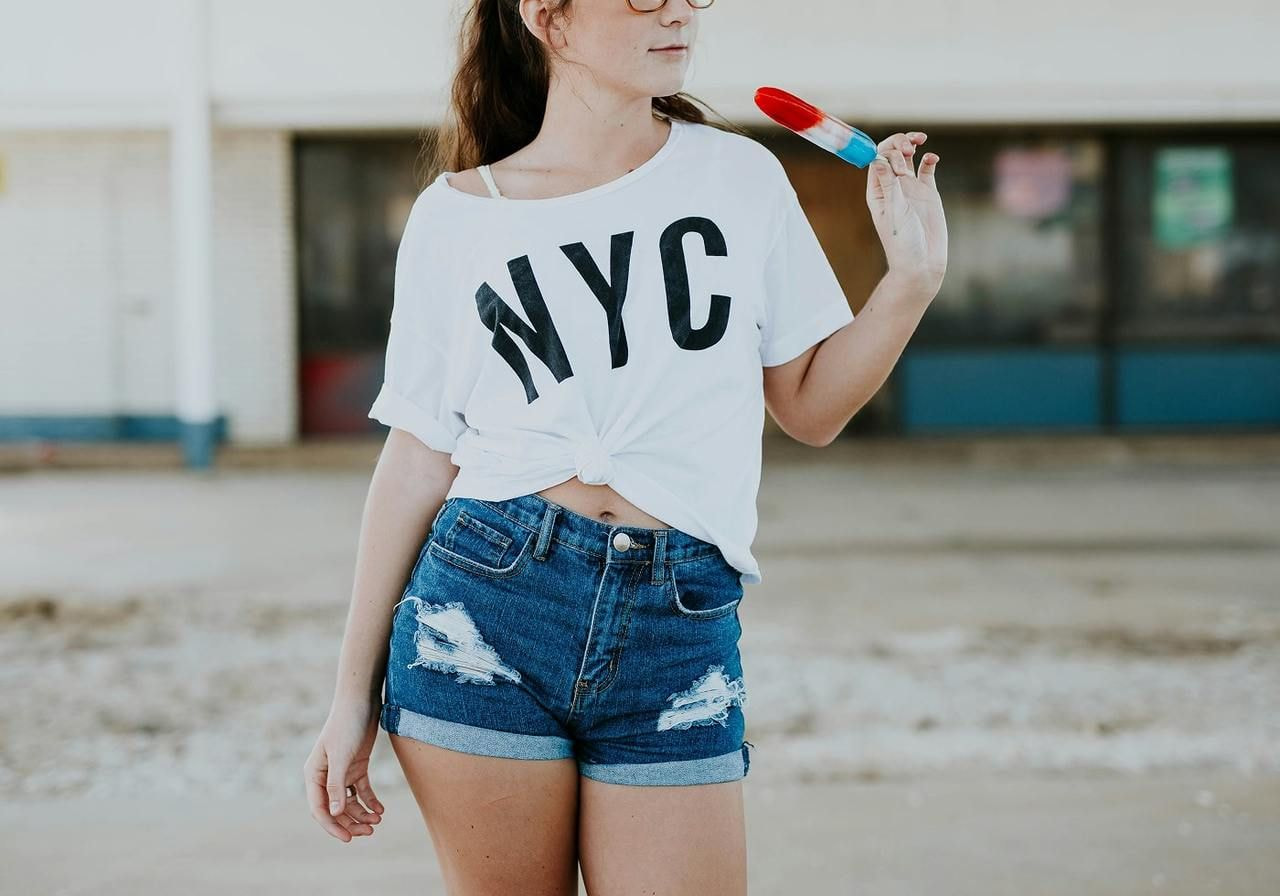
Now it’s time to start selling t-shirts. To reach your target audience and drive sales, you need a clear marketing strategy. Mix social media marketing, paid ads, email marketing, search engine optimization (SEO), and influencer partnerships to get visibility. Check out our article on how to market a product to get started. Use basic analytics (like Instagram Insights or store dashboards) to track what’s working and double down on it.
If you’re working with a small budget, focus on posting engaging, high-quality content on social media platforms like Instagram, TikTok, or Facebook. You can also send free t-shirts to micro-influencers or post in niche communities to build early traction. Check out our $50 marketing plan for more ideas.
Bonus tip: Study other t-shirt companies to keep up with your target market’s interests. Follow fashion industry trends and update your online store often with new designs.
Read these 6 t-shirt business success stories to get inspired. To find out what’s in style, check out our t-shirt design trends.
Examples of t-shirt stores to inspire you
Real business examples spark ideas and help you understand how a t-shirt brand can take off. Here are six online t-shirt businesses using print-on-demand services successfully.
1. Gay Pride Apparel
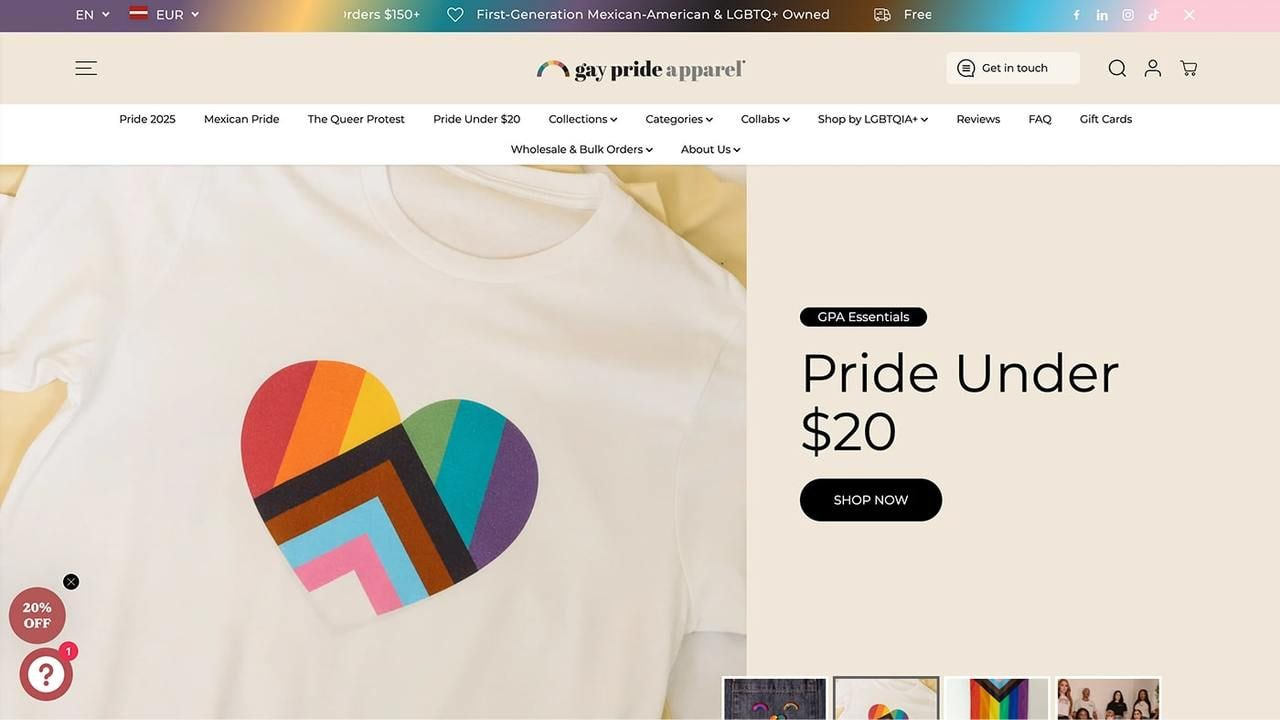
Source: Gay Pride Apparel
Founded in 2019 by Jesus and Sergio, Gay Pride Apparel is a clothing brand centered around LGBTQ+ identity, community, and activism. Using POD, they avoided upfront inventory costs and focused on launching meaningful niche designs. The brand regularly creates new shirts tied to pride events and cultural moments, and donates 10% of profits to LGBTQ+ charities.
2. Alice Potter Illustrations
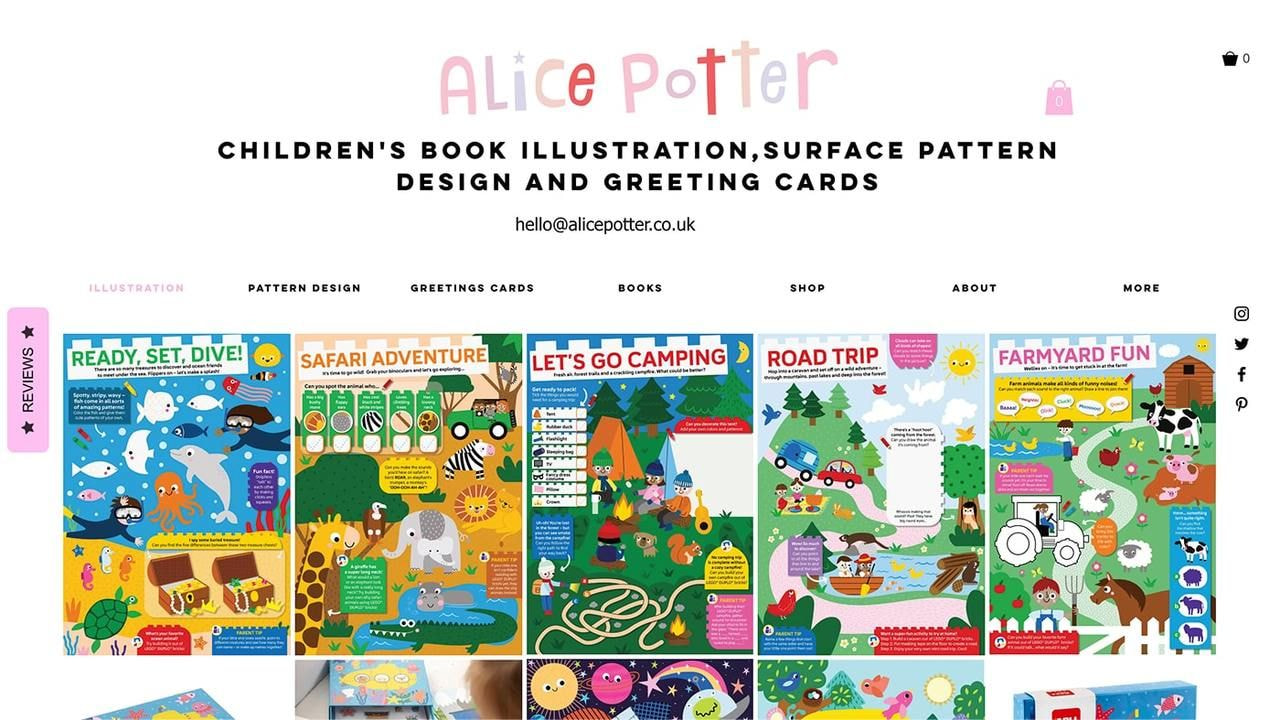
Source: Alice Potter Illustrations
Alice Potter, a UK-based illustrator, turned her artwork into a product line. Selling through her own ecommerce website and Etsy, she used Printful to automate the fulfillment of her custom t-shirts, pillows, and blankets. This allowed her to focus on design and family life without dealing with packaging or shipping.
3. Boredwalk
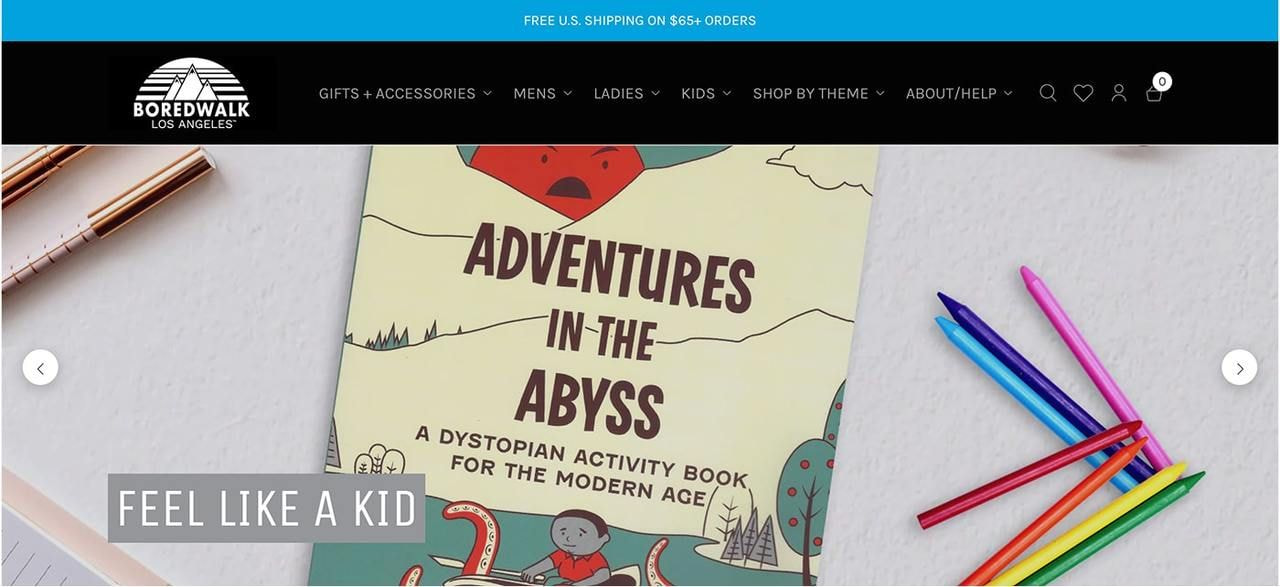
Source: Boredwalk
This lifestyle brand, founded by Matt Snow and Meredith Erin, started as a hobby project and quickly evolved into a thriving t-shirt business through Etsy and their own website. Their approach: test everything. They launch hundreds of designs, track what sells, and scale only what resonates.
4. UMAI Clothing
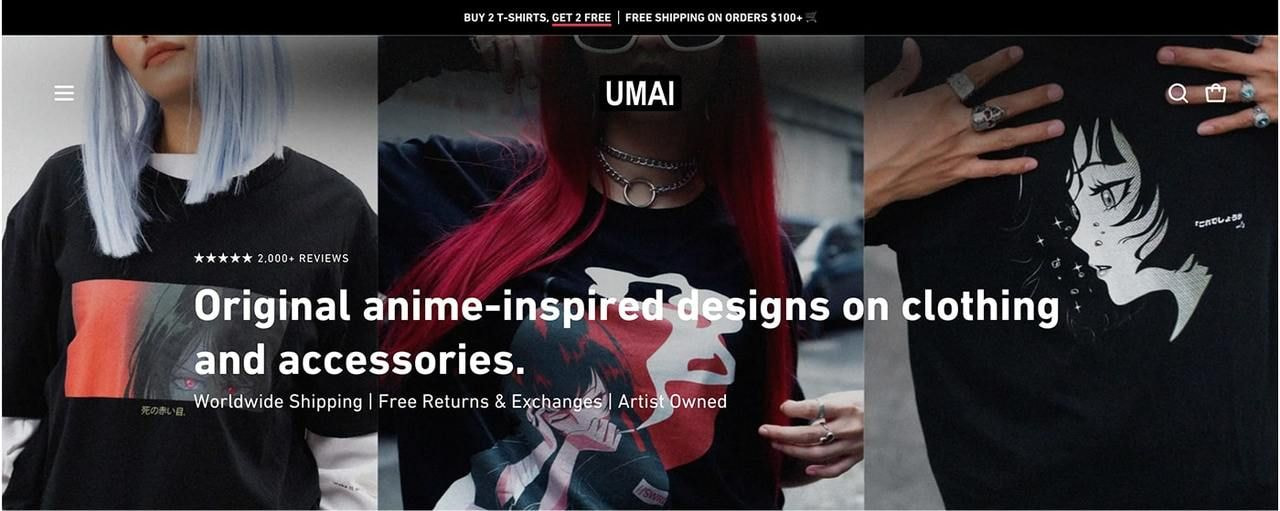
Source: UMAI clothing
UMAI Clothing specializes in anime-inspired streetwear. They used Print on Demand to test bold, art-driven t-shirt designs without large financial risk. Quick launches helped them grow from a small business to making over $100K monthly.
5. Effin’ Birds

Source: Effin' Birds
Created by Aaron Reynolds, Effin' Birds is a viral brand that blends vintage bird illustrations with unapologetic, sarcastic captions. Printful helped them scale fast without sitting on thousands of unsold shirts.
“I love Printful’s wide range of high-quality products and their responsive customer service. Teaming up with Printful lets us keep our product lineup fresh, and gives us the freedom to grow the business without tying up our money in 2000 t-shirts in my garage.” – Aaron Reynolds
What these brands show us
|
Insight |
Why it matters |
|
Start small and test often |
POD lets you experiment before investing more |
|
Target a clear niche |
Niche target markets are more likely to buy and stay loyal |
|
Expand your products gradually |
POD makes it simple to try new items beyond t-shirts |
|
Automate where possible |
Spend less time on logistics and more time growing your brand |
From community-driven small businesses like Gay Pride Apparel to bold, creative businesses like UMAI Clothing, these examples prove how powerful Print on Demand is. Whether you’re just starting or scaling up, it’s a proven way to launch and grow your t-shirt store.
Ready to start your t-shirt business?
Launching a successful t-shirt business requires focusing on quality, uniqueness, and effective business practices. A reliable printing partner and high-quality fabrics are key. Create designs your audience wants, price them competitively, and use social media to spread the word.
Before opening your t-shirt printing business, learn about t-shirt printing methods, fabrics, popular colors, and design trends. Our blog has in-depth guides on each topic to help you avoid mistakes and sell t-shirts online successfully.
The world is hungry for fresh, innovative designs. Follow the steps in this guide, stay creative, and build a t-shirt business you’re proud of.
More guides to help you start selling t-shirts online:


Frequently asked questions
Yes – starting a t-shirt business can be highly profitable. Consumers want comfortable, versatile clothing suitable for different occasions. The rising popularity of casual wear and athleisure worldwide is a key driver of the t-shirt market growth in small businesses and large fashion brands.
Starting an online t-shirt printing business is a profitable opportunity with low startup costs compared to other businesses. The profit margin of a t-shirt business depends on your niche, number of sales, marketing expenses, and more.
Starting a t-shirt brand online costs less than opening a physical clothing store. With the help of print-on-demand services, you don’t need to buy printing equipment, worry about printing techniques, inventory, or warehousing.
Your printing partner manufactures and ships your t-shirts, keeping costs as low as possible. You’ll only pay for products as orders come in, meaning there’s no overhead in the production process.
The costs of starting a t-shirt business from home are minimal. These include platform costs, domain hosting, acquiring a business license, and any marketing campaigns you run.
To start your shirt business, you need to:
-
Do market research and find your niche community
-
Choose a company name and logo
-
Create t-shirt designs
-
Set up an online t-shirt store
-
Build an online presence for your t-shirt brand on social media
-
Test your products with potential customers and niche influencers
-
Run paid ads for your t-shirt company
How much you earn selling t-shirts depends on your niche, design quality, and marketing. With thorough market research, high-quality designs, and a solid marketing strategy, you can make anywhere from a few hundred to several thousand dollars a month.

Zoe is a creative writer, multilingual translator, and certified yoga instructor with a passion for learning, traveling, and global cuisine. When she's not typing away at her PC, you can find her teaching yoga in the park, reading on the couch with her cat, or plunging in the Mediterranean.





